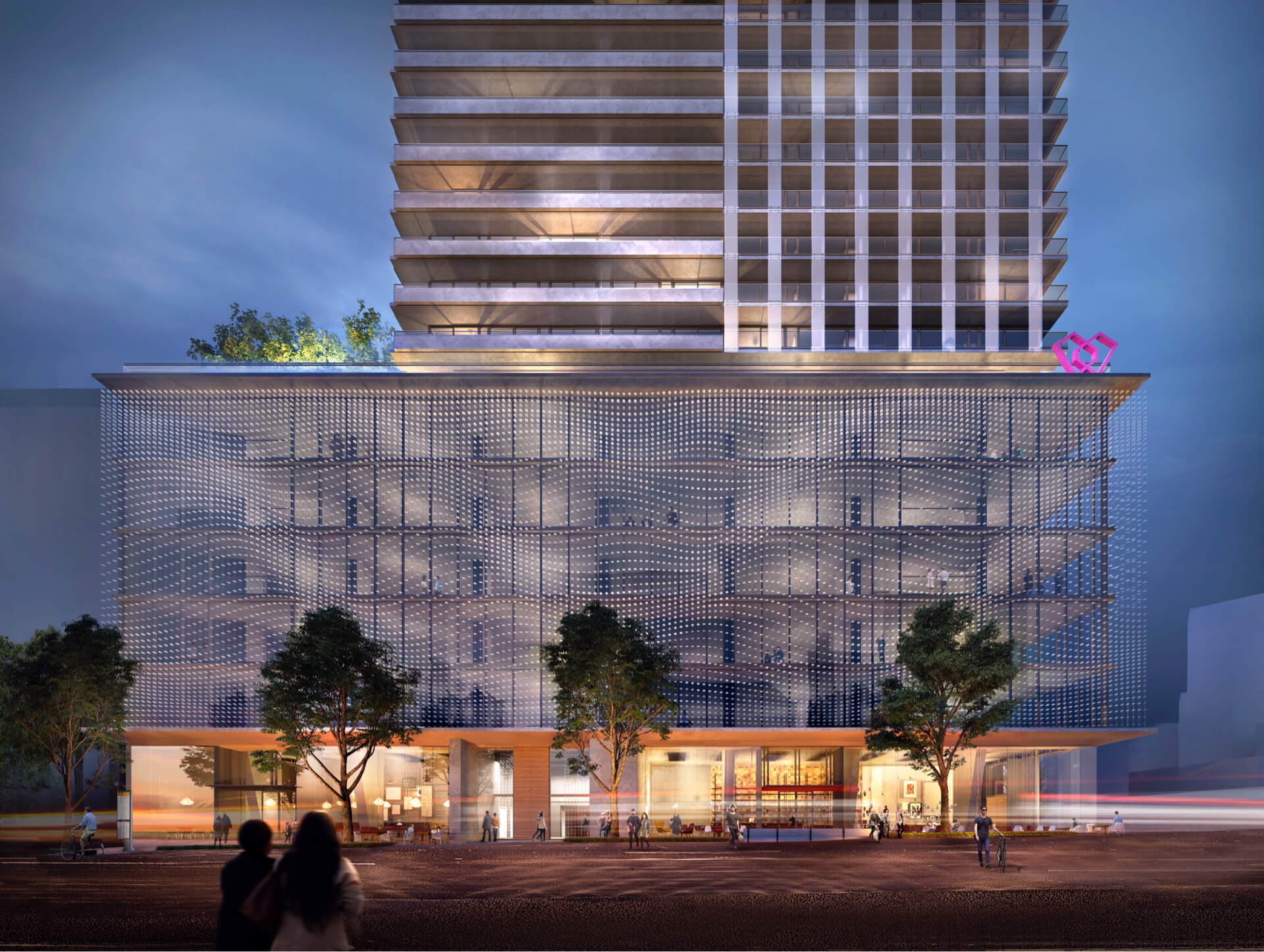
‘Light as a common thread’ comes from an essay of the same name by artist John Hogan, describing the artwork he has created for our project, First Light in Seattle. Hogan’s pieces together as a collection are called ‘Light as a Common Thread.’ His essay centres around this theme, these works, his practice and the idea of being offered the chance to do something you’ve never done before with collaborators who have partnered successfully with dozens of well-known artists on many other projects.
In the context of our decision to make Seattle one of the four core cities of focus for our practice, First Light is part of the troika of projects leading our efforts in this city. While each is unique, each share a clear commonality of language and each exhibit a high degree of artistry.
With First Light, we have the opportunity once more to work with our first artistic mentor, architect James Cheng. Our collaboration in Vancouver marked the beginning of Westbank’s journey over 20 years ago and having worked together on projects that have changed the trajectory of the built environment in Vancouver and Toronto, it seems only fitting that a new collaboration with James Cheng Architects forms part of our dive into Seattle.
In each of Westbank’s partnerships with JKMC Architects, one of the integral parts of our design process has been to bring in other collaborators. With First Light, we’ve teamed up with John Hogan, a Seattle-based artist who works predominantly in glass, whose oeuvre spans both functional objects and sculpture, focusing on changing radiant energy through the refraction of light.
Our collaboration with John Hogan continues our practice of offering our projects as canvasses for some of the most respected artists in the world. With First Light, John Hogan has been invited to use the canvas of the building to explore how light and glass can combine to create thousands of luminous sculptural moments throughout the project. At the core of the project’s design, this veil is one of the ways we are attempting to integrate art and architecture and to continue exploring the design philosophy of layering that began in our work with Kengo Kuma. In recognition of the condition of lightness, softness and of layering that the artist is creating, the building itself is kept simple and quiet. Much like you would expect from an art museum; the architecture creates the conditions to showcase and elevate the art.
John’s work will be incorporated throughout the project, in the veil, in a multisensory space in the residential lobby and a secret garden on the roof, in a second veil around the amenity space and in unique, one-off light sculptures inside each home. In this way, the project not only demonstrates the concept of layering, it also represents a natural progression of the Total Work of Art which we began at Vancouver House. Another core theme we are weaving into the project is the idea of bringing nature back into cities, where this project will be infused throughout with natural elements and layered with gardens and apple orchards. The interiors in each home will feature Applewood, creating a continuity of design between the natural exteriors and the materiality of interiors.
First Light is a story of collaboration. This quality of work only happens by bringing together like minded people with the common goal of producing something extraordinarily good. This is a much more difficult process requiring much more effort than is typical, but in the end we have found that there is no substitute for this level of effort and that the outcomes are more than worth it.
This exhibition and this catalogue are our attempts at capturing the thinking behind what we hope will be one of our first and finest examples of a project which combines all of the core themes we have been exploring in recent years. The thinking around these themes will continue to evolve, as the project evolves. We invite city-builders in Seattle to follow the journey along with us.
— Ian Gillespie